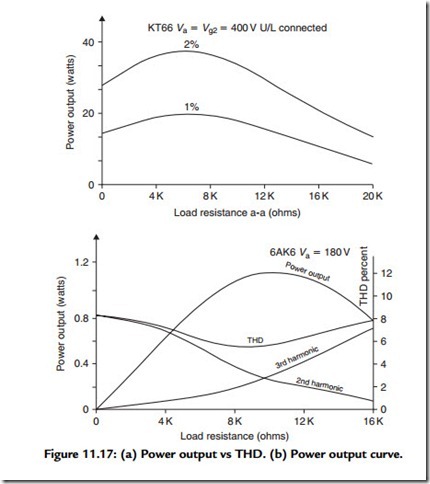Effect of Output Load Impedance
This is yet another area in which there is a conflict in design requirements, between output power and output stage distortion. Figure 11.17(a), shows the output power
given for 1 and 2% THD values by a push–pull pair of U/L-connected KT88s in relation to the anode to anode load impedance chosen by the designer. These data are courtesy of the GEC2 Since the distortion can also alter in its form as a function of load impedance, Figure 11.17(b) shows the way these circuit characteristics change as the load resistance changes. The figures given for a single-ended 6AK6 output pentode are due to Langford-Smith.
Related posts:
Fuel Injection – Bosch D-Jetronic and L-Jetronic (ECGI) (part2)
Troubleshooting and Repairing Computer Printers - A modern printer
Hall effect sensors:Hall Generator Applications
Environmental sensors:Air purity
Pressure switches and sensors:Pressure Switches
PNEUMATIC CONTROL FUNDAMENTALS:PILOT BLEED SYSTEM
THE PN JUNCTION
Troubleshooting control circuits:Ladder logic circuits
Basic Logic Gates:Not Gate
TRANSDUCERS AND VALVES:INDUSTRIAL SWITCHES
Counter-voltage in a Motor Armature
Forward-re verse control: Developing a Wiring Diagram and Reversing Single-Phase Split-Phase Motors
Troubleshooting control circuits:Automatic sequence starting
INTRODUCTION TO POWER ELECTRONIC CONVERTERS FOR MOTOR DRIVES
